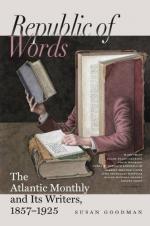The cattle-farms or hatos of the Plains are owned, for the most part, by the Creole residents of the cities which dot their outskirts, but are inhabited only by the semibarbarous hateros, who attend to the few requirements of the stock, and slaughter the annual supply. The hatero, although a descendant, and proud that he is so, of the Spanish settlers, has much intermixture of Indian and negro blood in his veins. Few of the Llaneros, indeed, could show a pedigree in which the Castilian blood was not sorely attenuated and diluted with that of half-a-dozen Indian or negro progenitors. He is born on the Llanos, as were his ancestors for many generations; and he has no conception of a land in which cattle-plains are unknown, and where the carcass of an animal is of more value than the hide. His ideas are restricted to his occupation, and his religious notions limited to the traditional instruction handed down from the days when his forefathers lived amid civilized men, or to the casual teaching of some fervent missionary, who devotes himself to the spiritual welfare of these lonely dwellers on the Plains. Eight or ten persons at the utmost form a hato, and suffice for all the requirements of thousands of cattle. The women are as much accustomed to solitude as the men, and spend their time in domestic occupations, or in cultivating the little patch of ground upon which their supply of maize and cassava is grown. The occasion of their marriage is perhaps the only one of their visit to a town,—perhaps their only opportunity of seeing a printed book. Men and women alike are a simple, healthy, ignorant race, borrowing manners, dress, and dialect rather from the Indian than from the Spanish stock.




